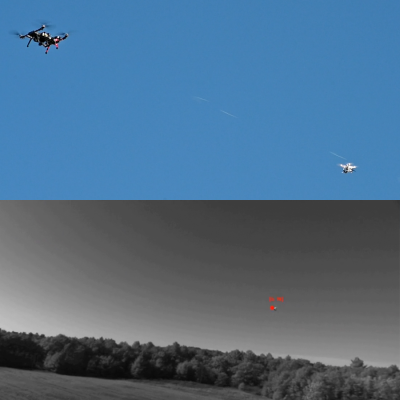

“What that means is that it combines Aurora’s innovation with Boeing’s strength. “Aurora is an independent subsidiary of Boeing,” he said.

It was the company’s success as a leader in innovative thinking that led to its acquisition by Boeing, Langford said, giving it an even greater ability to search out markets that require innovative technology. The company recently also opened a Silicon Valley office in the NASA Research Technology Park in Mountain View, California, focused on solar-powered aircraft, small Unmanned Aircraft Systems (UAS) and work in support of NASA’s UAS Traffic Management (UTM) program. Aurora is now a wholly owned subsidiary of The Boeing Company. Langford, III, is the Chairman and CEO of Aurora Flight Sciences Corporation, which he founded in 1989. The company’s European office is located in Luzern, Switzerland, supporting the development of Aurora’s electric vertical takeoff and landing (eVTOL) aircraft unveiled at the Uber Elevate Summit in April 2017. Started with two employees, the company now has about 550 employees scattered among its four main sites: its headquarters and prototyping facility at Manassas Regional Airport in Manassas, Virginia production sites in Bridgeport, West Virginia, and Columbus, Mississippi and a research and technology center in Cambridge, Massachusetts, adjacent to the MIT campus. With the success of the Daedalus project, Langford began looking looking around for new challenges, ultimately creating the company he named Aurora.

In the mid-80s, he had been a leader in programs to design and fly human-powered aircraft, including the 1988 flight flight of the Daedalus (named for the mythological Greek inventor of flight), which still holds official world records for total distance, straight-line distance and duration for a human-powered aircraft. The company was started in May 1989 by John Langford, who graduated from the Massachusetts Institute of Technology (MIT) with a PhD in Aeronautics and Public Policy. Or to put it another way, a company whose entire existence is thinking outside the box. 8, 2017, The Boeing Company acquired Aurora Flight Sciences, which bills itself as “an innovative technology company which strives to create smarter aircraft through the development of versatile and intuitive autonomous systems.”
#Aurora flight siences bumpr obstacle avoidance update#
This article provides an update of the company’s innovative vertical flight programs. Since the last comprehensive review of Aurora Flight Sciences (Vertiflite, March/April 2013), much has happened with the company. Thinking Outside the Box Is Inside the Box at Aurora Flight Sciences


 0 kommentar(er)
0 kommentar(er)
